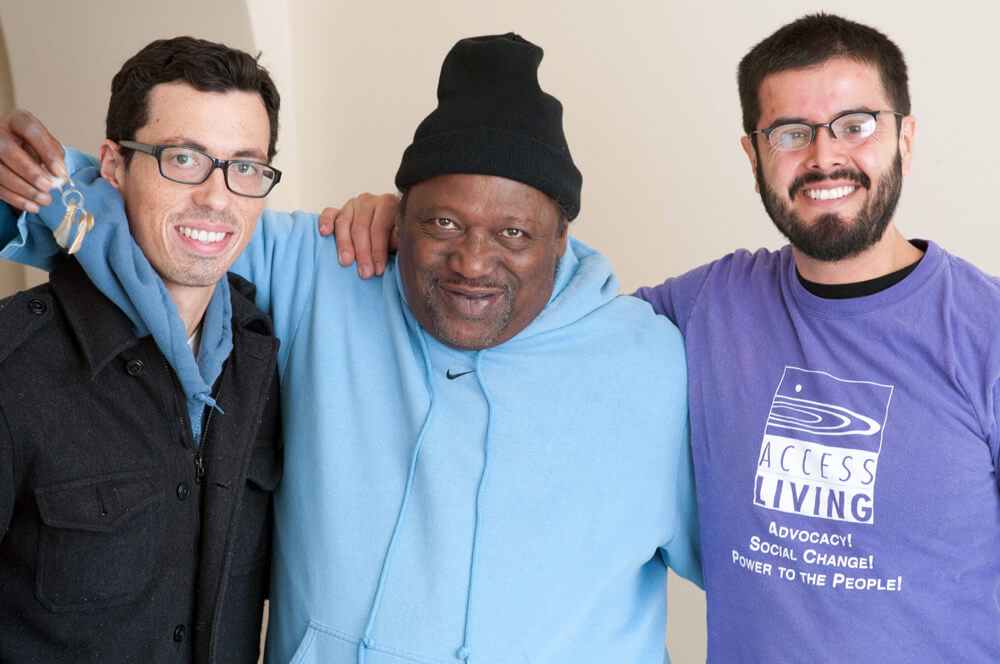Dariusz Barwacz
Manager – Community Reintegration
The Illinois Department of Human Services (IDHS) is the State Agency that leads the Colbert and Williams Program. Every single nursing facility or Specialized Mental Health Rehabilitation Facility (SMHRF) in Cook County works with a particular agency assigned to that facility. Access Living provides outreach and housing location services for some of the agencies participating in the Colbert Program.
Class Members are adults who can get Medicaid and who are, or might be in the future, in facilities when they do not need to be.
Class Members are people who may be able to live in the community with the right supports and services.
Each nursing home or SMHRF works with one Colbert/Williams agency. To be in the Colbert/Williams program, a person can contact that agency. This can be done by Class Members, family, friends, or other people. To find the right agency or learn more, contact IDHS:
Our outreach staff members educate Class Members about the program. Class Members who are interested take part in an assessment. After the assessment, if the person is recommended to move out, they are linked to a care manager. The care manager helps them find housing and get ready to move. After that, they set up services and supports to help the Class Member live independently in the community. The care manager visits them often to follow up and make sure they are safe and healthy.
Assessments are done by specially trained staff in the Colbert/Williams program. These staff people know about people with special and complex needs and how to identify what that person might need to live in the community. They look at the person’s needs, strengths, abilities, and preferences, and whether the person can safely and successfully move to the community.
Class Members who are not recommended to move to the community are told the reasons why. They are given goals to work on for 6 months. They also get the “Your Right to Appeal” document, which tells them how to file an appeal if they disagree with the recommendation. Class Members who are recommended to move to the community are linked to services to help them
Class Members can get many services and supports. These include:
Class Members get help to find housing where they want to live. Some types of housing include apartments with private landlords, senior buildings, Supervised Residential Settings (SRS), or Supportive Living Programs (SLPs).
Class Members can get a Bridge Subsidy to help with rent. Class Members pay 30% of their income towards rent, and the Bridge Subsidy pays the rest of the rent. The Bridge Subsidy helps bridge the gap between moving out of the facility and being able to get a permanent rental subsidy.
Once a Class Member is recommended to move into the community, a Care Manager makes a Service Plan to identify the Class Member’s needs, wants, and goals, and the services and supports they will need. The Care Manager works with the Class Member in making the Service Plan, and also involves family or other people the Class Member wants to include. The Care Manager works with facility staff and other providers to do the activities in the Service Plan and move the Class Member into the community. After the Class Member moves, the Care Manager stays involved. The Care Manager coordinates services, makes sure they are getting good care, building skills, and helps make sure they are safe. The Care Manager does these things in person or by phone.

Access Living team members work alongside nursing facility residents as they transition into their chosen communities to assure they have the skills and resources they need to live as independently as possible.
We offer two programs for people with disabilities who have lived or currently live in nursing facilities: